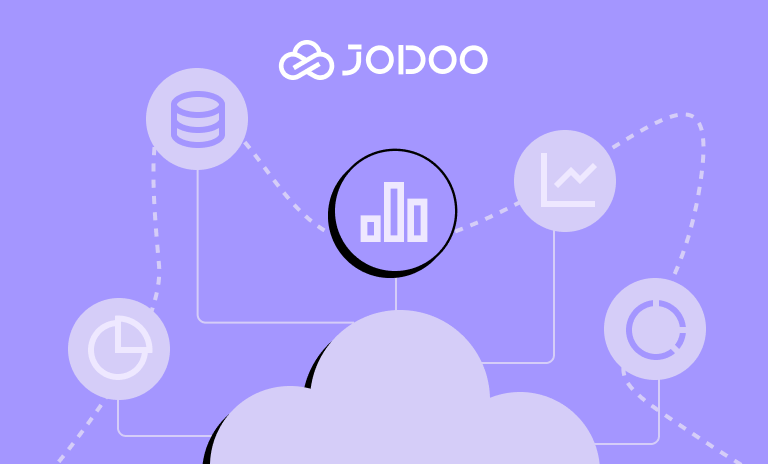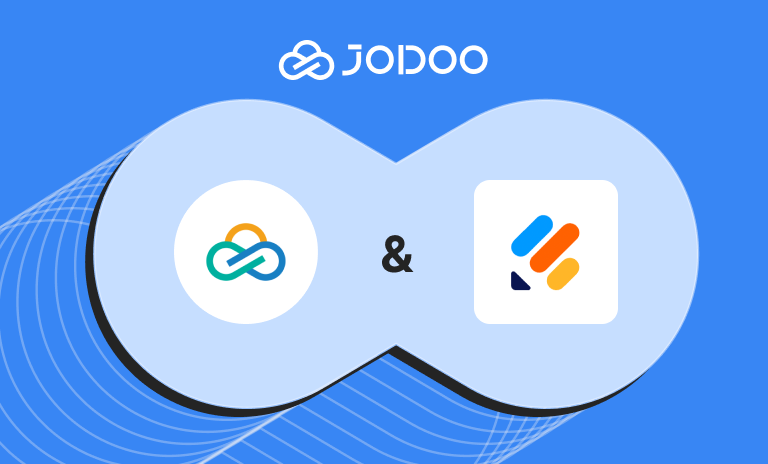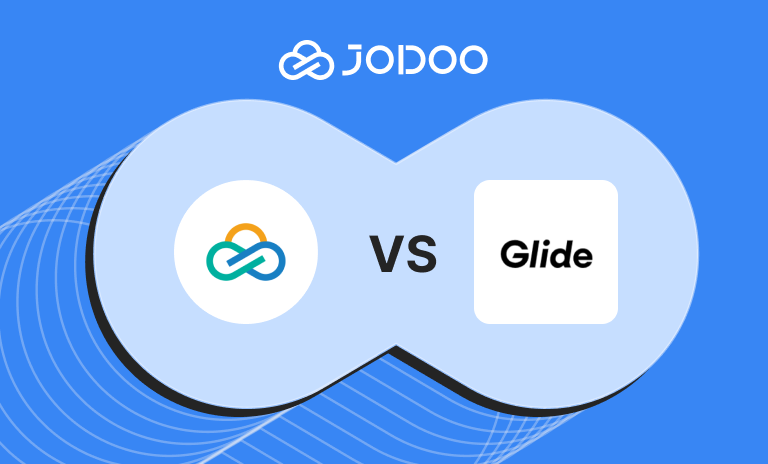Abstract: In August 2023, Airtable, a leading no-code platform, significantly changed its pricing plans. These adjustments have sparked a range of reactions from its user base and could have broader implications for the no-code industry. In this post, we’ll dissect the pricing alterations, explore user feedback, and highlight potential alternatives.
How Does The Pricing Plan Change?
The 2023 pricing plan for Airtable seems to be a clear move to focus on larger enterprise customers. This is supported by the fact that Airtable has landed a number of large enterprise customers, including Netflix, Shopify, Intuit, and Autodesk.
Additionally, Airtable’s CEO, Howie Liu, has stated that the company is aggressively investing in enterprise products and focusing on enterprise needs.
Notably, they expect to lay off 237 employees (27% of the company) to focus on winning large enterprise clients and controlling spending. Howie Liu stated that the company needs to operate more maturely to become a public company and grow efficiently.
Therefore, all of the plans have been impacted, and below are the details of how they changed.
Free Plan
Airtable’s Free Plan has undergone revisions in terms of limits and feature availability.
| Feature | Current or Legacy Free plan | New Free plan |
|---|---|---|
| Maximum users with commenter permissions | Unlimited | 50 per workspace |
| Records per base | 1,200 | 1,000 |
| Attachment storage per base | 2 GB | 1 GB |
| Extensions per base | 1 extension | N/A |
| Sync integrations per base | 1 sync integration | N/A |
| API calls per workspace or per month | Unlimited | 1,000 |
Team Plan (Formerly Pro)
The Pro plan has transformed into the Team plan, featuring modified limits and features while maintaining the same pricing structure. $20/user/month (Annual plan) or $24/user/month (Monthly plan).
| Feature | Current or Legacy Pro plan | New Team plan |
|---|---|---|
| Attachment storage per base | 20 GB | 10 GB |
| Automation runs per month (per workspace) | 50,000 | 25,000 |
| Sync integrations | 3 sync integrations | Access to all standard sync integrations |
| Multi-source sync | Included | N/A |
| Extensions per base | 10 | Access to all extensions |
| API calls per workspace or per month | Unlimited | 100,000 |
Plus Plan Deprecated
The Plus plan is no longer available, but existing users can access the Team plan at their current Plus plan pricing.
| Feature | Current or Legacy Plus plan | New Team plan |
|---|---|---|
| The cost per user who has Commenter permissions or higher in at least one base. | $10/user/month billed annually or $12/user/month billed monthly | You will continue to be charged at your current Plus plan pricing unless you decide to switch to a different plan. |
| Records per base | 5,000 records | 50,000 records |
| Extensions per base | 3 extensions | Access to all extensions |
| Sync integrations per base | 3 sync integrations | Access to all standard sync integrations |
| Attachment storage per base | 5 GB | 10 GB |
| Expanded color and formatting options | N/A | Included |
| Advanced calendar features | N/A | Included |
| Passwords and domain-restricted shares | N/A | Included |
| Field and table editing permissions | N/A | Included |
| Granular interface permissions | N/A | Included |
| Automation runs per month (per workspace) | 5,000 | 25,000 |
| Automation run history | 6 months | 1 year |
| Gantt and timeline views | N/A | Included |
| Personal and locked views | N/A | Included |
| View sections | N/A | Included |
| API calls per workspace or per month | Unlimited | 100,000 |
New Plans
Airtable recently announced the addition of two new plans to their offerings. The first plan, called Business, is designed for small businesses and departments and is priced at $45/user/month (Annual) or $54/user/month (Monthly). The second plan, Enterprise Scale, is tailored for large organizations, and pricing is available upon contacting sales.
Check details of the new plan on Airtable’s pricing page.
What Are User Reactions to The Changes?
The changes in Airtable’s pricing structure have elicited diverse reactions from its user community.
On Reddit, some users have expressed concerns about the increased cost of using Airtable. One user mentioned that they love Airtable and could find many more uses for it at their day job, but the cost of $20/user/month (on the Pro Plan) is not something they would even present to the owner of their company. Another user mentioned that they have a large amount of spreadsheets that they need to share with various employees, vendors, and customers, but are unable to do so without paying for multiple users on multiple different workspaces.
One user on the Airtable Community forum stated that the new pricing is “a joke” and that they feel like Airtable is “actively hostile to its user base.” Another user on the same forum agreed and said that they have been a customer for more than 3 years and have spent thousands of hours optimizing the system for their needs, but now they feel like they have been given a message that they have 3 weeks to move to another platform or pay more than twice the money they have been paying just to keep things running. It seems that a considerable amount of users are unhappy with the changes and feel like they are being treated unfairly.
While some express disappointment and frustration, others may see potential benefits in the new plans. It’s important to consider a range of perspectives when evaluating these changes.
What Are The Impacts on Third-Party Integrations?
Airtable users often integrate the platform with other products through Make or Zapier, which can result in complex, multi-step integrations. However, these integrations can lead to a significant number of API calls and can be challenging to manage if you need to monitor current average usage.
As a result, the recent pricing changes may impact not only Airtable users but also those who depend on third-party tools and integrations.
What Are Some Alternative Solutions to Airtable?
For those seeking alternatives to Airtable, community members of Airtable have raised some worth exploring options like NocoDB, Baserow, Stacker, SmartSuite, and Jodoo. We also looked into most of the promising online database products to compare them with each other. Here, we are going to introduce Jodoo, as we think it is the best alternative.
Jodoo: A Powerful No-Code Platform
Jodoo is a robust, no-code platform designed to streamline workflows and maximize efficiency. Unlike Airtable, Jodoo does not impose limits on API calls in its Business plan, ensuring seamless integration with third-party tools. This means you can continue leveraging your favorite tools without worrying about additional costs or limitations.
Customizable and Flexible
Jodoo’s open platform allows for API and Webhook integration, and SSO. You can even build your own plugins and use them with the forms. This flexibility makes it easier to tailor Jodoo to your specific needs and preferences, offering a level of customization that’s hard to match.
Robust Form Design
Jodoo also offers a robust form design feature, allowing you to create custom forms with a variety of field types. This is the perfect alternative to the form view on Airtable. You can also use aggregate tables for aggregation calculations and pre-calculation of existing form data, simplifying data management and analysis.
Affordable Price for Generous Data Management
When it comes to data management, Jodoo stands out with its generous data capacity. With 300,000 data volumes for a single form and a total of 750,000 data volumes, plus 120 GB/year for file uploads in its Standard plan, you can store and manage large amounts of data without worrying about storage limits.
Upon closer examination of the pricing for various alternatives, Jodoo’s solution stands out as more accessible and cost-effective.
SmartSuite provides 5,000 rows in a single table, while Jodoo provides 300,000 rows at a lower cost. Even though Airtable’s new Team plan allows you to store 50,000 records in a base (composed of multiple tables), it’s still significantly lower than Jodoo’s offering of 300,000 records.
Jodoo also outperforms its competitors when it comes to the number of records that can be stored in a workspace, with an impressive 750,000 records compared to SeaTable’s 50,000 and Baserow’s 10,000.
Lastly, Jodoo provides excellent file storage for the workspace with a staggering 120GB of storage, 12 times more than Retable’s offering and 2.5 times more than SeaTable and SmartSuite.
If you’re looking for a cost-effective online database with great performance, Jodoo is the clear choice. Its competitive pricing and superior features make it a wise investment for any business.
| Items | Jodoo | Jodoo | Airtable (Current Pricing) | Retable | SeaTable | Baserow | SmartSuite | Stackby |
|---|---|---|---|---|---|---|---|---|
| Plan | Standard | Business | Team | Team | Plus | Premium | Team | Economy |
| Monthly Cost Per User | $9 | $19 | $24 | $12 | 9€ | $5 | $12 | $9 |
| Records per table | 300,000 | 500,000 | N/A | N/A | N/A | N/A | 5,000 | N/A |
| Tables per App | Unlimited | Unlimited | Unlimited | Unlimited | Unlimited | N/A | 25 | 3 |
| Records per App | N/A | N/A | 50,000 | 50,000 | N/A | N/A | 5,000 | 7,000 |
| Apps per Workspace | Unlimited | Unlimited | Unlimited | Unlimited | Unlimited | Unlimited | Unlimited | 25 |
| Records per workspace | 750,000 | 3,000,000 | N/A | N/A | 50,000 | 10,000 | N/A | N/A |
| File Storage per Workspace | 120GB/Year | 360GB/Year | 10GB/App | 10GB | 50GB | 5GB | 50GB | 4GB/App |
Guidance for Current Airtable Users
If you’re an Airtable user affected by these changes, follow these steps to assess your options:
Step 1: Evaluate your current usage
Take a look at your current usage of Airtable, including the number of records, storage, automation runs, API calls, and multi-source syncing. Compare these numbers with the new limits introduced by Airtable to see if you will be affected by the changes. Don’t forget to consider the impact on your third-party integrations and tools that rely on Airtable’s API.
Step 2: Consider the cost
Calculate the cost of staying with Airtable under the new pricing plans. If you are currently on the Plus or Pro plan, you will be automatically migrated to the Team plan, priced at $24 per user per month. Note that if you previously were in the Plus plan, you won’t be charged for the new price until you decide to change your plan. If you need more features and higher limits, you may need to upgrade to the Business plan, priced at $54 per user per month.
Step 3: Explore alternatives
Research other options that may provide similar features and functionality at a more cost-effective price point. Some popular alternatives include NocoDB, an open-source alternative to Airtable; Baserow, an open-source platform that provides a comparable experience to Airtable; and Jodoo, an all-in-one application development platform that lets you create custom forms, build online databases, configure workflows, and get your app running in minutes.
Step 4: Make a decision
Based on your evaluation of your current usage, cost considerations, exploration of alternatives, and impact on third-party integrations, decide on whether to stay with Airtable or switch to another platform.
Conclusion
The 2023 pricing changes in Airtable may have you considering other options. As you evaluate your needs, remember that the right solution should not only meet your current needs but also grow with your business.
With its user-friendly interface, powerful features, scalable framework, and dedicated support, Jodoo could be the reliable and cost-effective solution you’re looking for. Explore Jodoo’s features today and see how we can help you streamline your workflows and maximize efficiency.



